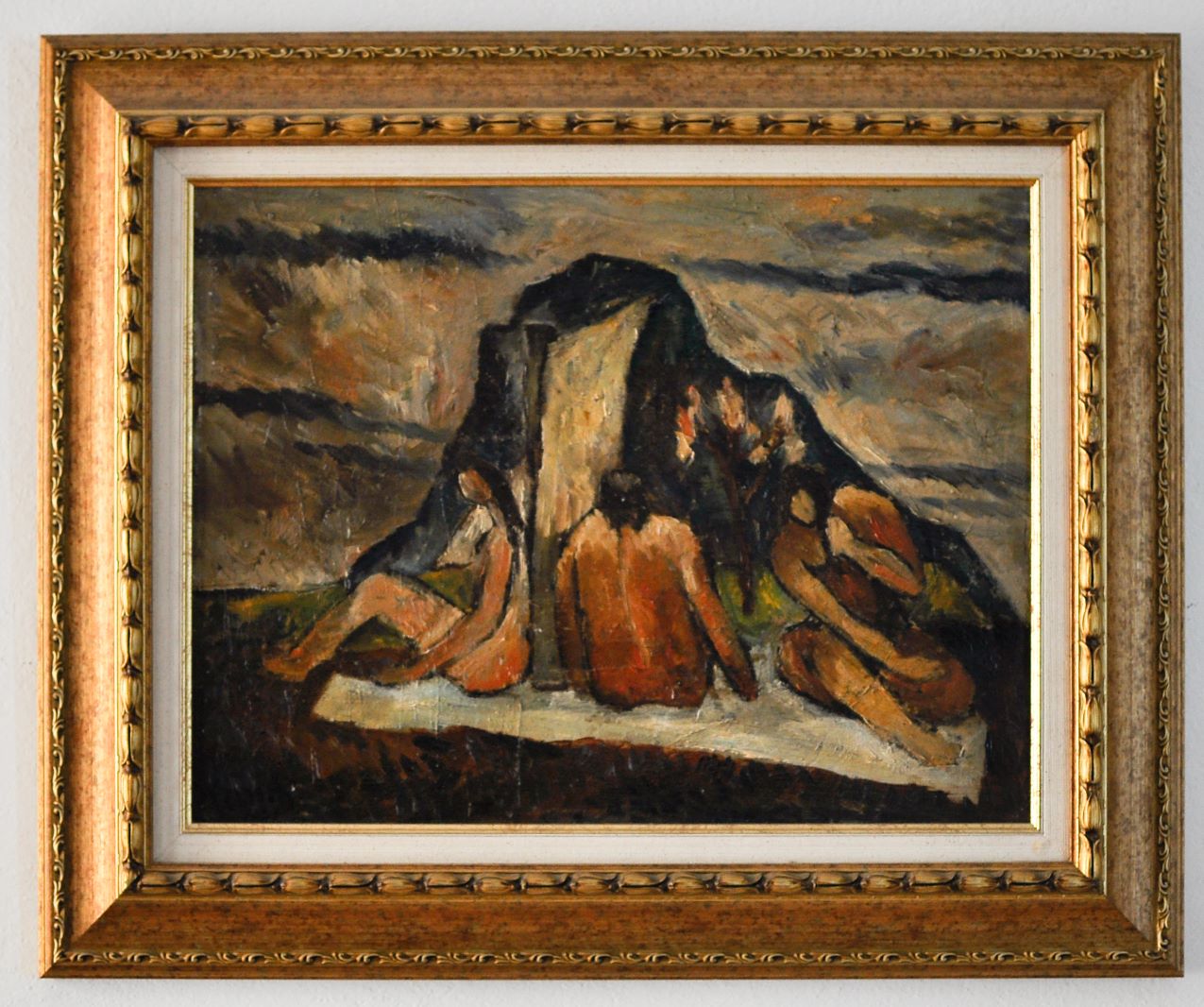by Michele Pierleoni©
(translation from Italian into English by Giancarlo Urselli)
Leghorn is notoriously a city where painters have blossomed, a testament being the many exhibitions of local painters – from Giovanni Fattori (1825-1908) through generations of artists constituting an extraordinary wave of pictorial experimentation focused on Tuscan shrubland landscapes. However, it would be unjust –and intellectually dishonest– giving all the attention only on these events providing prestige to the Italian pictorial production of the 1800s.
In fact, here in Leghorn took place also interesting spells of artistic research in chromoluminarism (the divisionism style); as well as in the symbolism movement, and so on, up to some of livornese artists engaged in ‘overgrowing the reality’ through own visual poetics, albeit connected to the nation-wide contemporary style-developments. Those latter artists, who are yet to be fully appreciated, include Mario Ferretti (1917-1974).
It is in the 1930s and for his strongly mature painting style that Ferretti came into the spotlight amongst exhibitions and critics alike, in the context of a decade that had already commenced quite interestingly thanks to Giovanni Zannacchini’s descriptive style. In 1938 Ferretti is the author of ‘Zona industriale’ (Industrial Area) and ‘Passo in vetreria’ (Popping by a Glass Factory); and also, of other similar pictures of urban peripheries that, with a flavour vaguely ‘metaphysical’, put forth an ‘unconventional’ insight into the city, one comparable to Ghigo Tommasi’s low-pitched style, or to Voltolino Fontani’s minimising palette.
Whilst ‘Zona industriale’ and ‘Passo in vetreria’ portray the industrial periphery, Leghorn is inspirational to Ferretti also for her old neighbourhoods (the drawing herewith is an example): Leghorn’s città vecchia, that has now partially succumbed to WWII’s bombings, is depicted through sure graphic strokes and in modern spatial qualities shedding newer light on that ancient architecture from 1600s and 1700s.
In the 1940s Ferretti’s gaze comes through the glance of a lace-up palette and the 1944 ‘Bagnanti ai piedi di una rupe’ (Bathers Down a Cliff) is a case in point: ochre, brown, pomace, and olive-green tones. In this picture, which since first sight departs from the local landscaping tradition, the last century’s Tuscany inhales intensely Cézanne, and the Tuscan setting is a functional pretext into the painter’s formalist experiments. Yet, his research is continuing and constant, and by the 1950s it gets into abstract works painted on paper, most of which are presently part of Fondazione Livorno’s collection.
But abstract art wasn’t really his true dimension and eventually, after a creative break, Ferretti comes back to portraying in continuation with an artistic discourse that evidently was never interrupted by the abstract phase; to comprehend fully Ferretti’s poetics, a quote from the critic and writer Curzio Malaparte: “Mario Ferretti is an artist entirely plastic, acute observer of movement, colour and form. He’s a director that order and arranges his characters in order to achieve a maximum dramatic effect.”
Such drama is potently expressed on the paintings of ‘Via Crucis’ (Stations of the Cross) in the San Giovanni Bosco church of Leghorn, where plasticity of the figures blends so closely with a brisk-paced aesthetic dialogue across the fourteen stations that Walter Martigli stated that the Ferretti’s deepest ‘sacrality’ is discovered in this Stations of the Cross-cycle – a suggestion also by Jacques Maritain, a philosopher known by many artists and likewise read in Tuscany thanks to Gino Severini.
About Ferretti I cannot overlook the poetic sensibility either, as recorded in his book of collected poetry ‘Almeno un’eco’ (At Least an Echo) that I curated a few years ago and from which comes this extract:
«Di me non posso dirti nulla / perché di nulla ho fatto la mia vita. / Non ho speranza, non ho ricordi / non ho né cuore né memoria. / Di me non ho da dirti nulla / solo vorrei di grida fare un coro / grande come un mare, / solo allora potrei darti di me / almeno un’eco»
(I can tell you nothing about me, because of nothing I moulded my life. No hope, no remembrances; neither heart nor memory. Of me nothing is to be told, only I wish to make a choir of cries as big as a see, for only then I could give you at least an echo of mine).
This is how a hypersensitive gives a glance into the most hidden core of his existence through the most powerful of instruments of the word. A tormented hypersensitive man that Ferretti was, always looking for visual stimulations, but always true to himself. Even when, at the crepuscule of his production, reinterprets an evocative painting like ‘Die Toteninsel’ (Isle of the Dead) by Arnold Böcklin into an opus with a Mediterranean perspective reminiscent of Fiorenzo Tomea for some aspects, and of Alberto Savinio’s playful amusement for some others.
Finally, I cannot overlook his capability to elaborate reality, either – to elaborate and remit reality in a momentum of his own; a personal distinctive dynamic present since his creative outset and matured in the decades of his artistic production into expressing, in Voltolino Fontani’s own words, “his own world make of wisdom, painting but above all his suffering human existence.”
